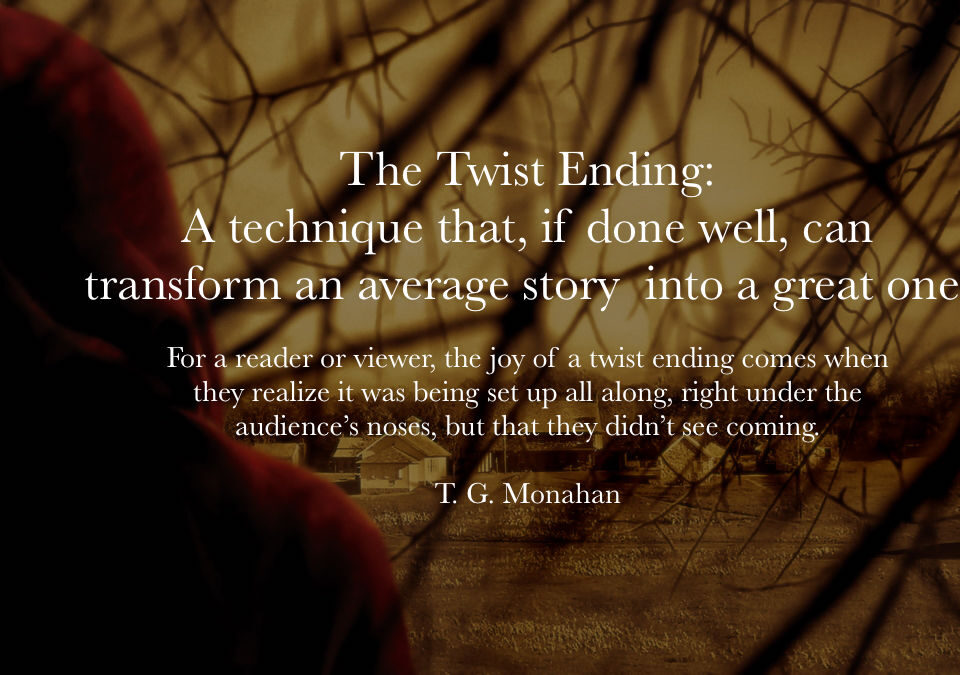Coming in February 2020!
January 22, 2020
PERFECT STORIES: YOUNG SHERLOCK HOLMES (1985)
March 6, 2020PERFECT STORIES
For years, it’s been an ambition of mine to create this space. Story structure endlessly fascinates me, and I’ve devoted much of my adult life to better understanding it. When I was a novice writer, assisted by so many selfless experts, I promised myself that, someday, if I ever made it as a published author, I would pay that debt forward. As they say, no time like the present.
Like Auguste Gusteau from Disney and Pixar’s Ratatouille, whose motto is “anyone can cook,” I firmly believe that anyone can write—provided one understands story structure. Far from being a straitjacket, structure frees the writer to explore a boundless universe of themes because it enables him/her to present ideas in a form readers or viewers will be able—indeed, want—to consume. What would be more impactful: a lecture on how humans grapple with mortality or reading The Epic of Gilgamesh (or watching Blade Runner—in my opinion, they’re the same story)? What leaves a bigger impression, being hectored by parents about the importance of home and family, or riding the coattails of Dorothy Gale in The Wizard of Oz? In the same way as its main character, Ebenezer Scrooge, rediscovers his humanity by witnessing not only his own origin story but the stories of the lives his bitterness has affected, so do we learn a new appreciation for kindness and generosity by reading A Christmas Carol, which would simply not be possible in didactic form.
Storytelling is the air we breathe. The great American figure skater Janet Lynn, when taking the ice, was routinely admonished by her coach, “Go out there and tell a story.” The best trial attorneys are storytellers: witness the masterful skills of attorney-turned-author Vincent Bugliosi as a prosecutor in Helter Skelter and defense counsel in And the Sea Will Tell. From the sprawling, immortal works of Tolkien and Rand, to the (seemingly) simplest thirty-second television commercial, structure gives integrity and voice to the ideas that, as human beings, enthrall, motivate, and vex us.
My inspiration for this blog first came to me when, as a lifelong practitioner of the martial arts, I considered the meaning of forms, or kata. The old masters conceived of and practiced kata as a means of codifying and handing down the fundamentals and the practical application of their offensive and defensive techniques. As the martial arts practitioner progresses from simple, superficial performance of the kata to a deeper, more meaningful understanding of it, he or she gains the wisdom of not only the individual technique, but how they combine in a larger whole. The same thing is true of storytelling. By understanding the individual elements of stories done right, the practitioner learns not only how to create each element, but how they fit together to create an unforgettable plot.
Certain stories—some well-known and some obscure—serve, in my opinion, as “forms,” which, if we analyze them on a deeper level, become blueprints for our own creations. While there is no such thing as a “perfect” story, there are ones that nonetheless achieve perfection in elements of their conception and/or execution. I have tried to select some lesser-known works, eschewing most of the very popular and well-known stories, of which most people have already formed an opinion. My hope is that these analyses of what I believe to be exceptionally well-crafted stories will assist the reader, contemplating them with fresh, objective eyes, in developing his or her own creations.
Throughout this blog, I will be using the terminology from sources I consulted when learning the craft of storytelling; most notably The Anatomy of Story by John Truby, Hooked by Les Edgerton (who I studied under), and Story Structure Architect by Victoria Lynn Schmidt, Ph.D. I highly recommend purchasing these sources, as they will prove an invaluable resource throughout your writing career.
Finally, to the fledgling author, feeling the nascent tale in his or her bones and for whom its realization is, like Scheherazade, a matter of life and death: I see you. I am you. You inspire me every day. It’s for you that this space exists.
T.G. Monahan


